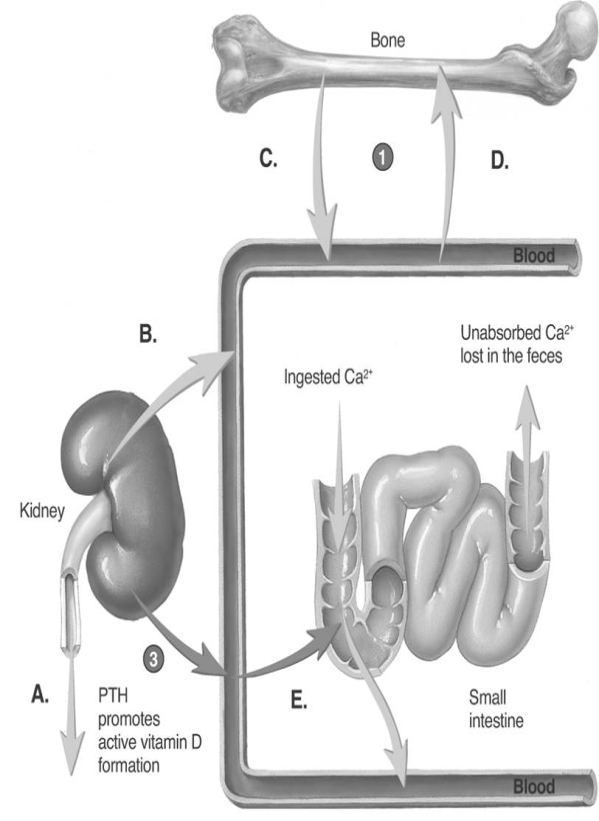A) vitamin D - aids calcium absorption
B) vitamin C - necessary for collagen synthesis
C) vitamin D - obtained by synthesis or ingestion
D) sex hormones - cause spurt of growth at puberty
E) parathyroid hormone - increases calcium loss in the kidneys
Correct Answer

verified
Correct Answer
verified
Multiple Choice
Lamellar bone
A) has its collagen fibers randomly oriented.
B) has a porous appearance.
C) is organized into thin sheets of tissue.
D) is very light in weight.
E) is not easily restructured.
Correct Answer

verified
Correct Answer
verified
Multiple Choice
Which of the following is associated with osteoclast reabsorption of bone?
A) Hydrogen ions form an acid environment in bone matrix.
B) Osteoblasts form collagen and proteoglycans.
C) The protein components of bone matrix are synthesized.
D) Ca2+ is actively transported from blood to bone matrix.
E) Blood calcium is decreased.
Correct Answer

verified
Correct Answer
verified
Multiple Choice
Osteoporosis is
A) bone inflammation that often results from bacterial infection.
B) a disease in adults, especially women, characterized by a reduced amount of bone matrix.
C) a disease in adults characterized by softening of bones resulting from calcium depletion.
D) a disease in children characterized by soft, bowed, and swollen bones.
E) a group of genetic disorders producing very brittle bones that are easily fractured; occurs because of insufficient collagen development.
Correct Answer

verified
Correct Answer
verified
Multiple Choice
When blood vessels become surrounded by concentric lamella forming osteons, the bone will grow in
A) length.
B) diameter.
C) the epiphyseal plate.
D) the articular cartilage.
E) all of these areas.
Correct Answer

verified
Correct Answer
verified
Multiple Choice
Which of the following events occurs last in intramembranous ossification?
A) Osteoprogenitor cells become osteoblasts.
B) A membrane of delicate collagen fibers develops.
C) Cancellous bone is formed.
D) Periosteum is formed.
E) Many tiny trabeculae of woven bone develop.
Correct Answer

verified
Correct Answer
verified
Multiple Choice
The type of lamellae that forms the outside surface of compact bone is
A) circumferential.
B) concentric.
C) interstitial.
D) appositional.
E) oppositional.
Correct Answer

verified
Correct Answer
verified
Multiple Choice
Osteomyelitis is
A) bone inflammation that often results from bacterial infection.
B) a disease in adults, especially women, characterized by a reduced amount of bone matrix.
C) a disease in adults characterized by softening of bones resulting from calcium depletion.
D) a disease in children characterized by soft, bowed, and swollen bones.
E) a group of genetic disorders producing very brittle bones that are easily fractured; occurs because of insufficient collagen development.
Correct Answer

verified
Correct Answer
verified
Multiple Choice
Which type of bone cells are large cells that form from fusion of monocytes?
A) osteochondral progenitor cell
B) osteoblasts
C) osteocytes
D) osteoclasts
Correct Answer

verified
Correct Answer
verified
Multiple Choice
 -This is a diagram of calcium homeostasis. What process is represented by "B"?
-This is a diagram of calcium homeostasis. What process is represented by "B"?
A) PTH promotes calcium release into blood by osteoclast.
B) Calcium is removed from blood by osteoblasts.
C) Vitamin D promotes calcium absorption.
D) Calcium is lost in urine.
E) PTH promotes calcium reabsorption from urine.
Correct Answer

verified
Correct Answer
verified
Showing 141 - 150 of 150
Related Exams